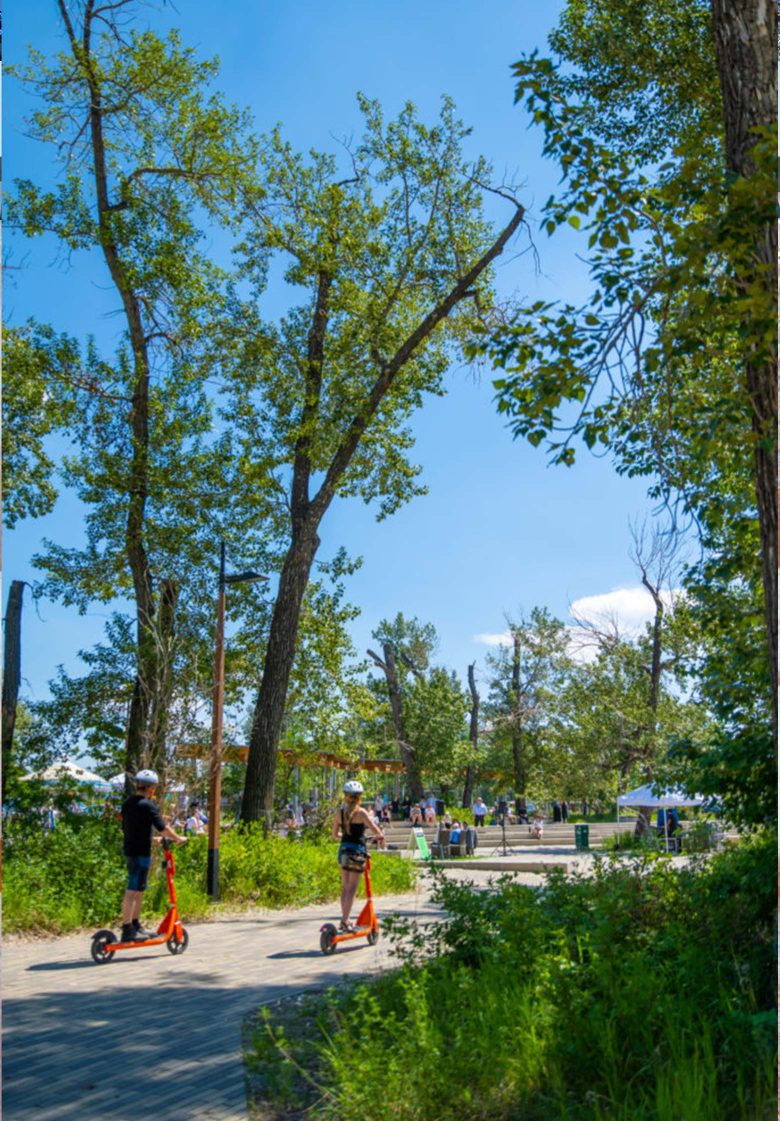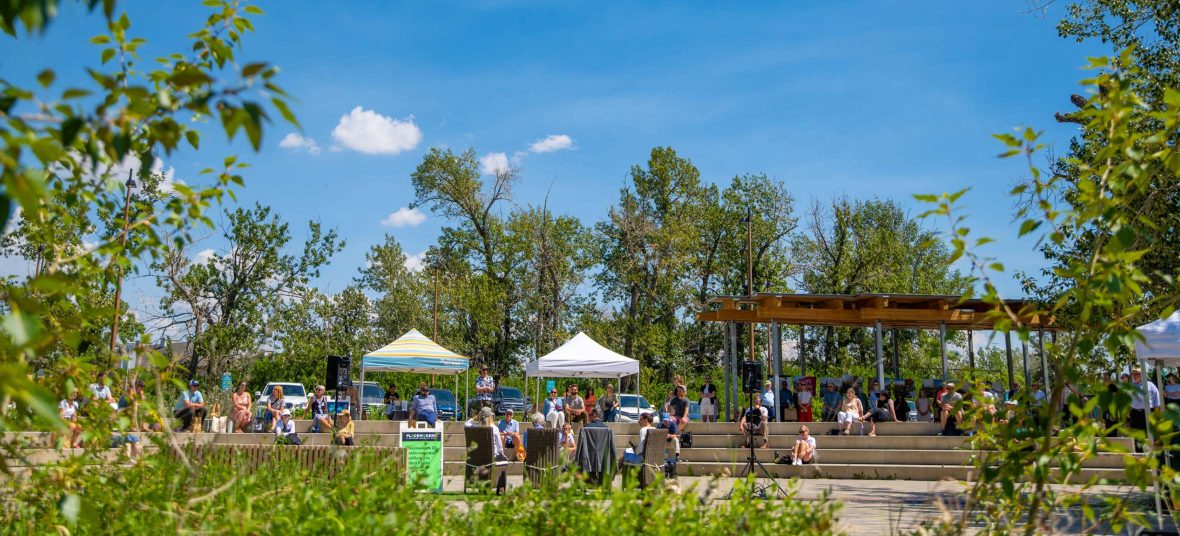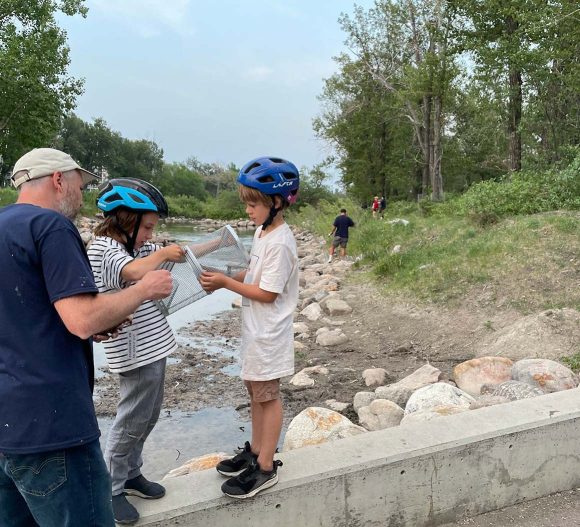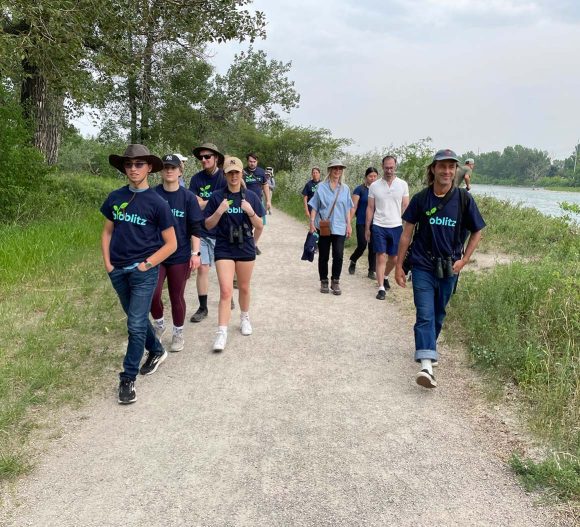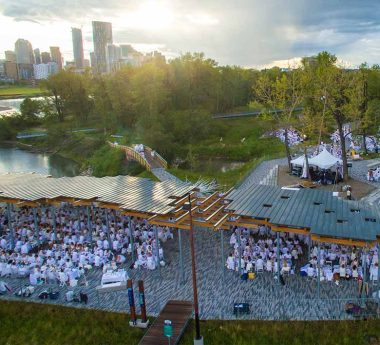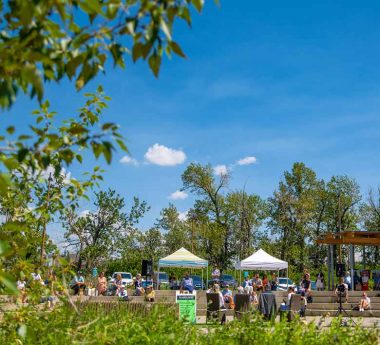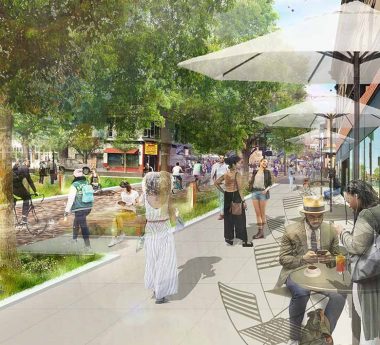Ten years ago, Calgary Municipal Land Corporation (CMLC) began the revitalization of St. Patrick’s Island as a key placemaking and sustainability strategy in the redevelopment of Calgary’s East Village, and engaged Civitas, W Architecture and Landscape Architecture, and Dr. Steven Handel of Green Shield Ecology to assist. Recently, CMLC invited all of us to return to the island to evaluate and discuss how the biodiversity of the island has changed through flooding and redevelopment in the last decade. On June 8, Civitas Principal Scott Jordan and our partners in the redevelopment of St. Patrick’s Island gathered for a panel discussion about the significance of environmental resilience in public spaces.
One notable fact about St. Patrick’s Island is that it was designed to flood intentionally. The functional breaches, which had been naturally recurring but manipulated by earlier intrusive developments, were restored in 2013 by reengineering the island and redesigning the inlet. This process ultimately slowed down the Bow River’s natural movement and made it safe for people to enter and engage the river. Coincidentally, in 2013, the island experienced its most severe flood event, when heavy rainfall on the melting mountain snowpack caused rapid and intense flooding in southern Alberta and caused the Bow River flow to peak at eight times its regular flow.
